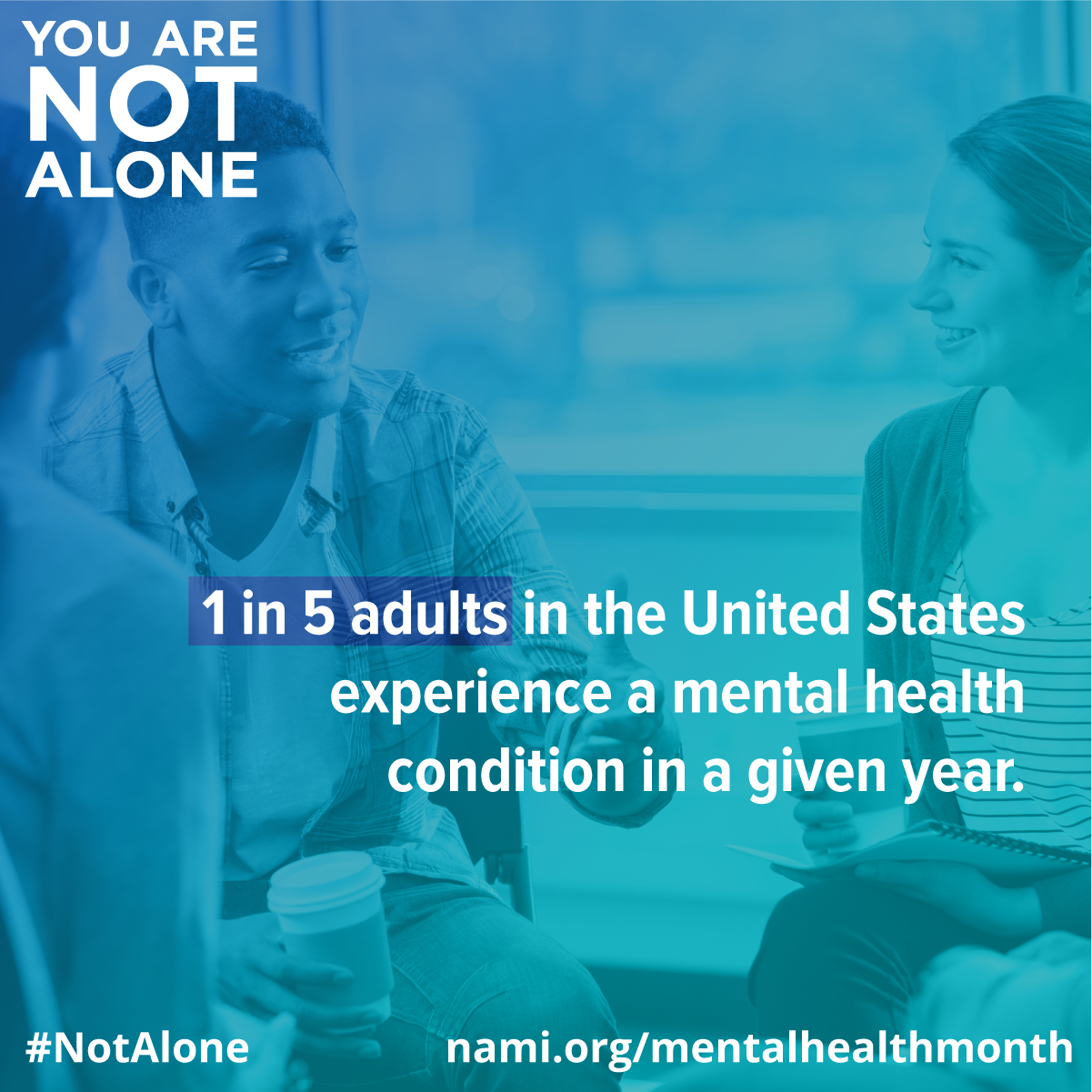6 Meaningful Mental Health Initiatives to Improve Employee Engagement
Mental Health is Organization Health

“What mental health needs is more sunlight, more candor, and more unashamed conversation.” – Glenn Close
May is Mental Health Awareness Month. A year of social distancing, remote work, online overload, and mask wearing has left many workers feeling alone, anxious, and depressed. Likewise, many people have lost loved ones, have experienced an increase in the cost of living, decreased salaries, stress at home trying to simultaneously work and be caregivers, supporting loved ones, juggling work and children who are attending virtual school, and more.
Though mental health problems are not unique to Covid-19 and the pandemic -- the CDC estimates depression and mental health problems cost businesses between $17 - $44 billion dollars each year – Covid-19 certainly exacerbated them.
The message this year to raise awareness for mental health is: You are not alone (#NotAlone).
Organizations and organization leaders must be on the frontlines, providing support for employees through meaningful mental health activities and initiatives. Here are some ways to do so, not only during May but year ‘round:
1. Normalize the conversation about mental health. Just as we talk about carpel tunnel and back problems, discussing mental health problems candidly and respectfully can help peel away the stigma.
a. During staff meetings, the CEO and HR leaders can discuss their experiences with mental health and plans to reduce the stigma at work.
b. Resources on how to access healthcare – mental and physical – should be available to employees.
c. Bring in work psychologists and nutritionists to talk about wellness – showing the connection between gut health and mental health.
d. Train leaders to understand the importance of mental health and recognize the signs of mental health problems. Additionally, train them in how to best address mental health with collaborators.
The more we talk, the more opportunities we have to share meaningful activities and information, the better employees will be.
2. Make sure your healthcare and benefits plan includes accessible mental health coverage for employees and their loved ones. Healthcare plans that combine medical and behavioral healthcare services can make a significant difference, as many who do live with mental health issues have co-morbidities like heart disease, diabetes, respiratory illnesses and more. Accessible services include analyzing things like costs and location, a reasonable distance for employees to get the care needed. It might mean looking for teletherapy options, as time is short, and many employees simply can’t reach offices or clinics where therapy is approved. (This option, once almost unheard of, has been normalized because of the pandemic.)
3. Sick days can include “mental health” days. Everybody has experienced those burnout days … the need to step back. Providing “mental health” days recognizes everyone’s need to take the time to decompress and pay attention to their mental health.
4. Identify job stressors that can heighten depression, anxiety, and other mental health issues. High job demands, lack of autonomy, lack of support, job insecurity, long hours, discrimination, boring work, and more top the list of things that exacerbate mental health problems. Much of the stress employees feel is under control of the organization and management. What meaningful changes will you make to address these issues?
5. Support a healthy work-life balance. Being on-call 24-7 works for doctor dramas on TV but, really, nowhere else. No one lives and breathes an organization. People have lives! And people who don’t, burn out fast. Without establishing structures and boundaries, organization-wide, this work-life balance will get upturned. Simple things like setting a company communication policy (reasonable response times … not everything is now) and establishing and communicating personal boundaries are a great start.
6. Promote wellbeing. How?
a. Support flexible work schedules (start and end times, vacation times etc.)
b. Develop a return-to-work process, just as you would to employees who are returning after lengthy physical illnesses, for employees returning after a leave of absence because of mental health issues.
c. Push employees out the door. Vacation time should be encouraged, honored, and not rolled over into the next year. Go the extra step and set up an internal forum for employees to share information about great getaways (near and far), where to get the best ticket deals and more.
d. Create opportunities for meaningful connections between collaborators. Now with Covid-19, it’s more complicated, but with a little creativity and a lot of determination, it can be done.
e. Exercise, healthy foods, and quiet places are all pieces of wellbeing at work. Provide lunchtime yoga. Do a cafeteria or snack room audit and lunch-n-learn conferences with a corporate nutritionist. Partner with the local YMCA, gym, sports shop and more to provide opportunities for your collaborators and their families to get moving.
#NotAlone is a powerful message. It starts with a conversation and good leadership, promoting policies, practices, and an organizational structure that support the health and wellbeing of all collaborators.
Mental Health Resources for Organizations
NAMI: National Alliance on Mental Illness
CDC Mental Health Resources
SHRM Resource Center
